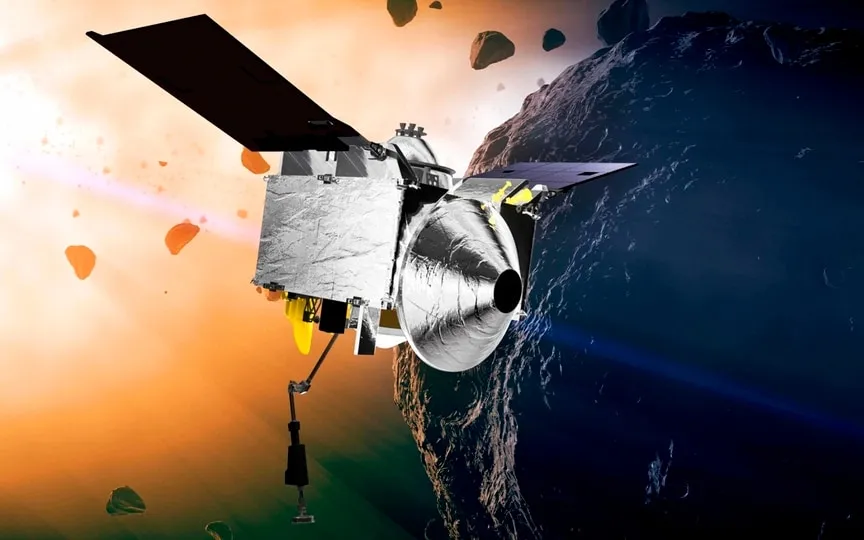NASA’s OSIRIS-REx Set to Touch Down in Utah with Asteroid Sample
Over the weekend, a NASA space capsule containing a sample of rocky material collected from an asteroid’s surface three years ago was on its way to Earth. The capsule was expected to enter the atmosphere, experience intense heat, and eventually land in the Utah desert on Sunday using a parachute. According to NASA officials, the weather conditions were favorable, and the robotic spacecraft OSIRIS-REx was on track to release the sample-return capsule for its final descent without requiring any additional changes to its trajectory. This information was shared during a news briefing on Friday.
Mission leaders expect a “spot-on” touchdown at the U.S. military’s sprawling Utah Test and Training Area west of Salt Lake City, said Sandra Freund, program manager for Lockheed Martin, which designed and built the spacecraft.
The round, gumdrop-shaped capsule is scheduled to land by parachute at 10:55 a.m. EDT (1455 GMT), about 13 minutes after blasting through the top of the atmosphere at about 35 times the speed of sound, capping a seven-year journey. .
If successful, the joint OSIRIS-REx mission by NASA and University of Arizona researchers will mark the third asteroid sample and by far the largest ever returned to Earth for analysis, following two similar missions by the Japanese space agency. over the past 13 years.
OSIRIS-REx collected its sample from Bennu, a carbon-rich asteroid discovered in 1999 and classified as a “near-Earth object” because it passes relatively close to our planet every six years. Scientists estimate the probability of it hitting the Earth at 1 in 2700 at the end of the 21st century.
Bennu is small as asteroids go, measuring just 1,600 feet (500 meters) in diameter — slightly wider than the Empire State Building is tall, but small compared to the cataclysmic Chicxulub asteroid that slammed into Earth about 66 million years ago, wiping out the dinosaurs.
Like other asteroids, Bennu is a memorable remnant of the early solar system, with its current chemistry and mineralogy virtually unchanged since its formation about 4.5 billion years ago. Thus, it contains valuable clues about the origin and evolution of rocky planets like Earth, and may even contain organic molecules similar to those necessary for the development of life.
“We’re literally looking at geological materials that were formed before Earth even existed,” Dante Lauretta, the mission’s principal investigator at the University of Arizona, Tucson, told reporters last month.
OSIRIS-REx was launched in September 2016 and reached Bennu in 2018. It then orbited the asteroid for nearly two years before daring to plunge a robotic arm into the loose surface on October 20, 2020 via grab-and-go.
The spacecraft set off on a 1.2 billion mile cruise back to Earth in May 2021.
The weight of the Bennu sample is estimated at 250 grams (8.8 oz), far exceeding the amount of material transported from asteroid Ryugu in 2020 and Itokawa in 2010.
Upon arrival, the new sample will be flown by helicopter to a “clean room” set up at a test track in Utah for preliminary research, then transported to NASA’s Johnson Space Center in Houston, where it will be broken down into smaller samples promised to about 200 researchers in 60 laboratories around the world.
Meanwhile, the bulk of the OSIRIS-REx spacecraft is expected to sail to investigate yet another near-Earth asteroid.




